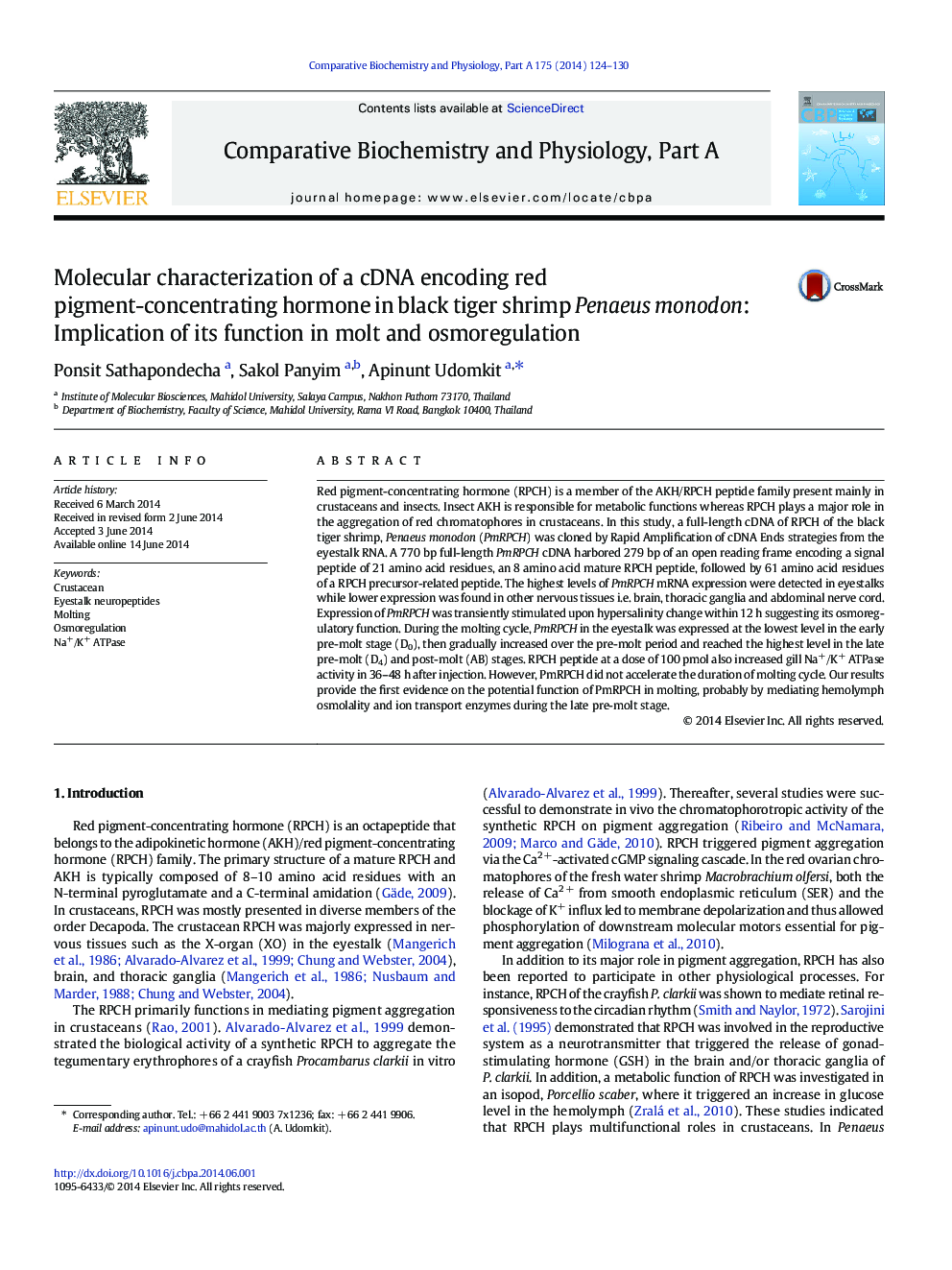| Article ID | Journal | Published Year | Pages | File Type |
|---|---|---|---|---|
| 8318636 | Comparative Biochemistry and Physiology Part A: Molecular & Integrative Physiology | 2014 | 7 Pages |
Abstract
Red pigment-concentrating hormone (RPCH) is a member of the AKH/RPCH peptide family present mainly in crustaceans and insects. Insect AKH is responsible for metabolic functions whereas RPCH plays a major role in the aggregation of red chromatophores in crustaceans. In this study, a full-length cDNA of RPCH of the black tiger shrimp, Penaeus monodon (PmRPCH) was cloned by Rapid Amplification of cDNA Ends strategies from the eyestalk RNA. A 770Â bp full-length PmRPCH cDNA harbored 279Â bp of an open reading frame encoding a signal peptide of 21 amino acid residues, an 8 amino acid mature RPCH peptide, followed by 61 amino acid residues of a RPCH precursor-related peptide. The highest levels of PmRPCH mRNA expression were detected in eyestalks while lower expression was found in other nervous tissues i.e. brain, thoracic ganglia and abdominal nerve cord. Expression of PmRPCH was transiently stimulated upon hypersalinity change within 12Â h suggesting its osmoregulatory function. During the molting cycle, PmRPCH in the eyestalk was expressed at the lowest level in the early pre-molt stage (D0), then gradually increased over the pre-molt period and reached the highest level in the late pre-molt (D4) and post-molt (AB) stages. RPCH peptide at a dose of 100Â pmol also increased gill Na+/K+ ATPase activity in 36-48Â h after injection. However, PmRPCH did not accelerate the duration of molting cycle. Our results provide the first evidence on the potential function of PmRPCH in molting, probably by mediating hemolymph osmolality and ion transport enzymes during the late pre-molt stage.
Related Topics
Life Sciences
Biochemistry, Genetics and Molecular Biology
Biochemistry
Authors
Ponsit Sathapondecha, Sakol Panyim, Apinunt Udomkit,
